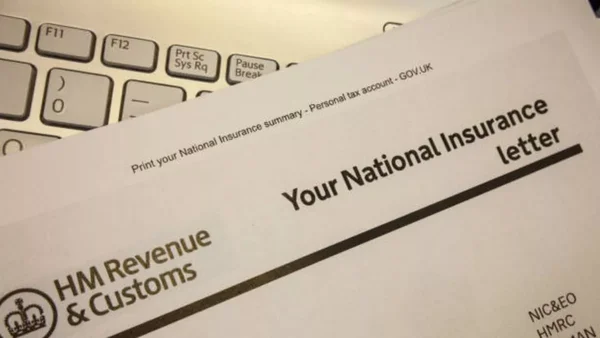What you need to know
Are you paying the right amount of tax? Millions of Britons are on the wrong tax code, potentially overpaying by hundreds or even thousands of pounds each year.
With HMRC issuing millions of tax codes annually, and an estimated one in three being incorrect, checking yours should be a regular habit.
While HMRC assigns your tax code, the responsibility for checking it falls on your shoulders not your employer's or the taxman's.
Our Pie tax app automatically monitors your tax code throughout the year, alerting you to potential errors before they impact your finances. Or if you're just here to get to grips with it all, let's break it down!
What Your Tax Code Means and Where to Find It
Your tax code is a combination of numbers and letters that tells your employer how much tax is deducted from your salary. The most common tax code is 1257L, but there are many variations. The code number in your tax code determines your tax-free allowance, so it's important to check and understand it to ensure the correct amount of tax is deducted.
You can find your tax code in several places. Check your most recent payslip it’s usually listed near your National Insurance number. HMRC also sends a PAYE coding notice (sometimes called a coding notice) to inform you of your current tax code and any changes.
It also appears on your P60 (the annual tax summary you receive after each tax year ends), your P45 (if you’ve recently changed jobs), or on letters from HMRC about your tax.
Don’t have these handy? Log into your Personal Tax Account on the HMRC website or download the HMRC app to view your current tax code.

How to Check If You Are on the Correct Tax Code with HMRC
Understanding what your tax code means is the first step in checking if it’s correct. The numbers typically represent your tax-free personal allowance. Most tax codes are based on just the personal allowance, also known as the basic personal allowance, and the code number is calculated from this figure.
For example, 1257 means you can earn £12,570 before paying any income tax. Personal allowances and other amounts, such as expenses or reliefs, can be included in your tax code, affecting your tax free pay and tax free amount. The letters provide additional information about your situation.
‘L’ means you’re entitled to the standard tax-free personal allowance. ‘M’ indicates you’ve received 10% of your partner’s personal allowance (Marriage Allowance).
‘N’ shows you’ve transferred 10% of your personal allowance to your spouse. ‘T’ means your code includes other calculations, while ‘K’ indicates untaxed income. A k code or k codes are used when deductions or reductions exceed your personal allowances, resulting in a negative tax free allowance, and other tax codes may apply in different situations. Allowances and tax free allowances are key components in determining your tax code
Common Tax Code Problems to Watch For
Emergency tax codes (often ending in W1, M1, or X) are temporary and usually mean you’re paying more tax than necessary. If you see these, contact HMRC promptly.
Another common issue is outdated information. If you’ve recently changed jobs or started receiving benefits like a company car, your tax code might not reflect this.
Multiple jobs or pensions can cause headaches too. HMRC might not allocate your personal allowance correctly across different income sources. Your employment status and being an employee can affect your tax code and payroll deductions, as each employment or pension may be taxed differently depending on how your allowances are split.
I once discovered I was on an emergency tax code for six months after changing jobs. The refund I received was enough for a weekend break in Edinburgh! Tax refunds are usually processed through payroll and may be paid directly into your salary.
Keep an eye out for unusual tax codes. BR means you’re paying basic rate tax on everything code BR is used when all your personal allowance has been used elsewhere and all your income from this job is taxed at the basic rate. D0 or D1 mean you’re paying higher or additional rate tax. Tax is paid and taxed on your income during each pay period, and your tax code determines how much is deducted each time you are paid.

When to Question Your Tax Code
You should review your tax code whenever your circumstances change. This includes starting a new job or taking on additional work.
Other triggers include receiving new benefits from your employer, getting married, or entering a civil partnership. Reaching state pension age or claiming taxable benefits should also prompt a review.
It’s wise to check your tax code at the start of each new tax year (April 6th), as HMRC often issues tax code updates to reflect changes in personal allowance and other allowances. These updates help ensure your tax deductions are correct for the year ahead.
If you have any income related changes during the year, such as receiving other income or benefits, double-check that your tax code has been updated to reflect these income changes. This helps ensure your PAYE tax deductions remain accurate.
How to Contact HMRC About Tax Code Errors
If you believe your tax code is wrong, contact HMRC promptly. The easiest way is to call their income tax helpline on 0300 200 3300.
Have your National Insurance number and accurate tax details ready when you call, as providing correct tax details is essential for HM Revenue and Customs (HMRC) to resolve your issue efficiently. Alternatively, you can message HMRC through your Personal Tax Account online.
If you prefer writing, you can send a letter to HMRC with details of the issue and copies (not originals) of relevant documents like payslips.
Be prepared to explain why you think your tax code is wrong and provide evidence to support your case. Do not assume your tax code is correct always verify with HM Revenue and Customs if you are unsure, to avoid incorrect tax deductions.

What Happens After Reporting a Tax Code Error
Once you’ve reported an error, HMRC typically takes 2 4 weeks to investigate and respond. If they agree your tax code is wrong, they’ll issue a new one.
If you’ve overpaid tax, you’ll usually receive a refund through your salary your take-home pay will increase until the overpayment is settled.
For larger amounts, HMRC might send a cheque. If you’ve underpaid, they’ll usually collect the money gradually by adjusting your tax code. HMRC will ensure you pay enough tax by updating your tax code, and your employer or pension provider will make the necessary changes to your pay. Your employer or pension provider is responsible for making sure you pay tax at the correct rate after a tax code update.
Keep checking your payslips after reporting an error to make sure the corrections have been applied properly.
Final Thoughts
Checking your tax code isn’t the most exciting task, but it could save you hundreds or even thousands of pounds. Most people are entitled to the standard personal allowance and tax code, but errors can still occur, so HMRC’s system puts the responsibility on you to verify accuracy.
Taking a few minutes to understand your tax code and check it regularly, especially after life changes, helps ensure you’re not paying too much or too little tax.
Most tax code errors can be resolved easily, but addressing them promptly prevents complications down the line.

Pie tax: Simplifying How to Check If You Are on the Correct Tax Code with HMRC Tax
Managing your tax code shouldn’t be a headache. The UK’s first personal tax app, Pie tax, takes the stress out of tax monitoring by automatically flagging potential errors.
Our smart dashboard handles multiple income sources with ease, ensuring your tax-free allowance is correctly split across all your jobs, pensions, and with your pension provider.
We’ve built sector specific tax assistants that understand the unique situations of contractors, employees, and those with mixed income sources.
The app provides clear, jargon-free explanations of your tax position throughout the year, not just at tax return time.
If you’d like to see how we can help you stay on top of your tax code and avoid HMRC headaches, explore the Pie tax app today.











